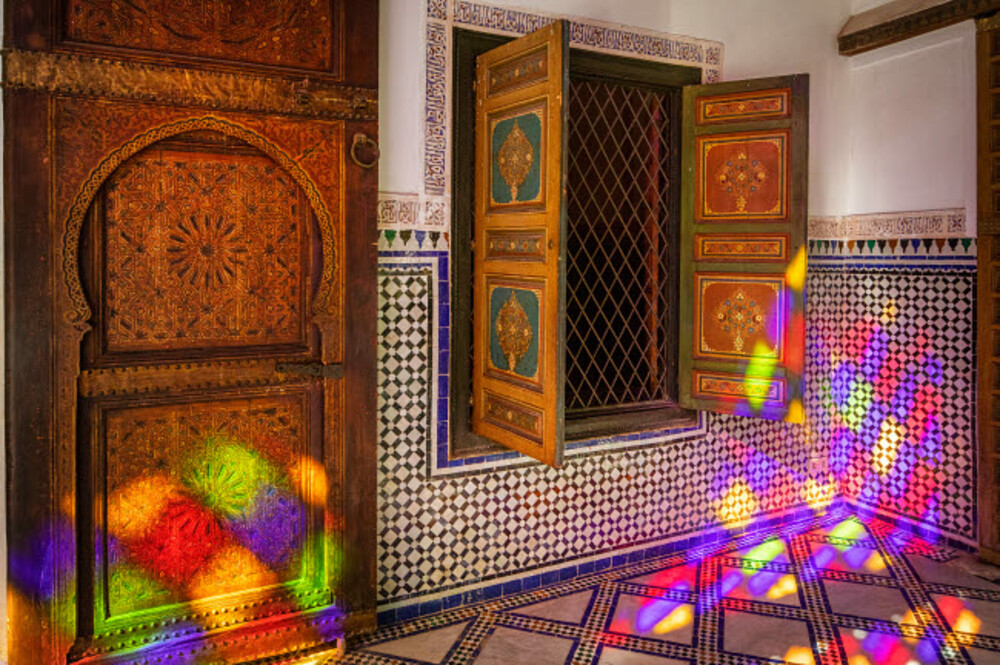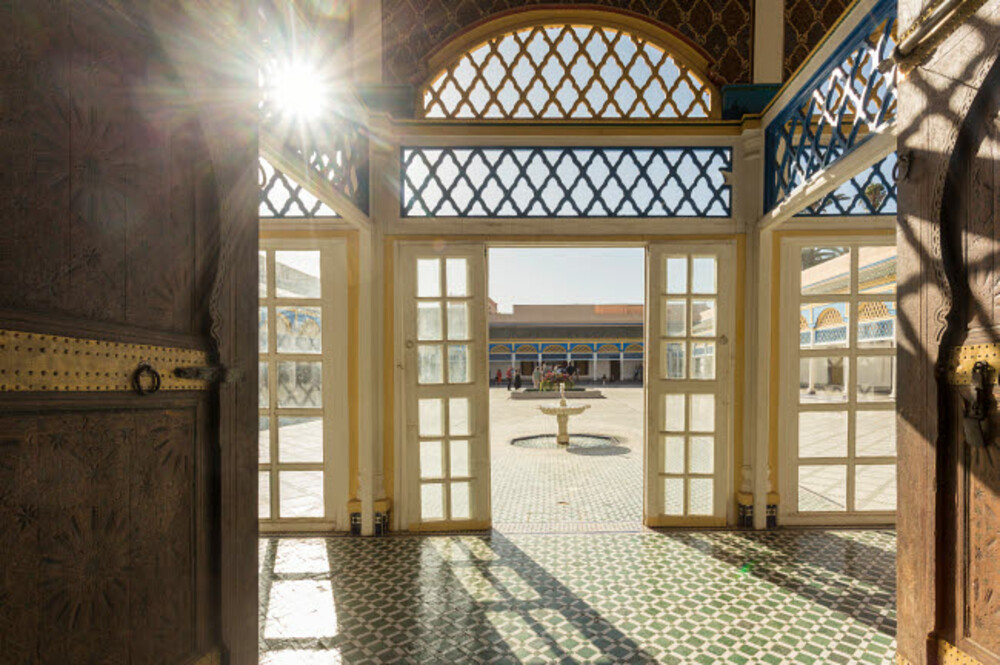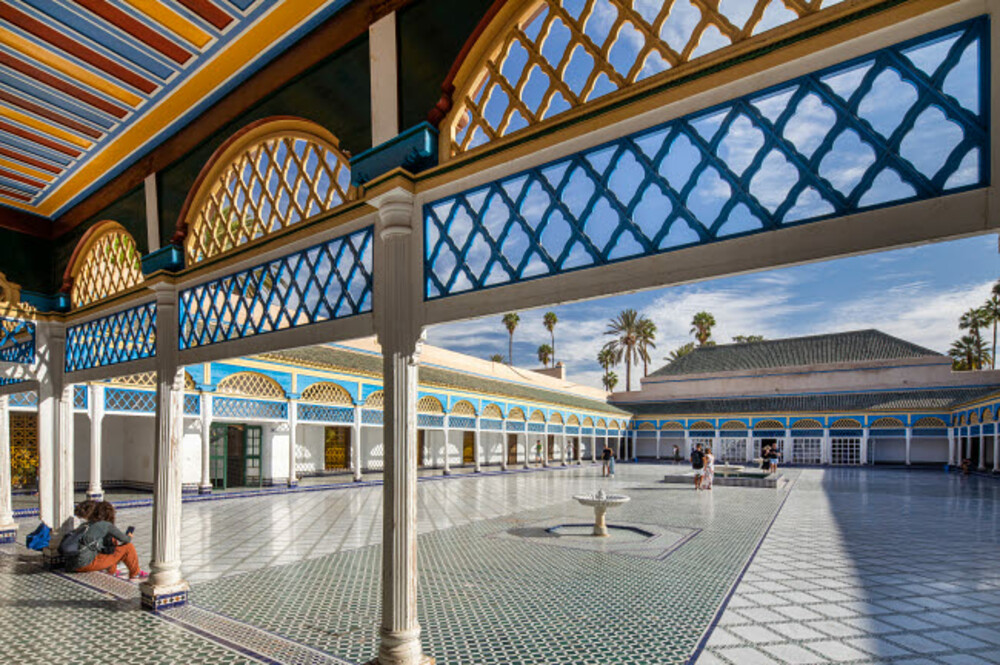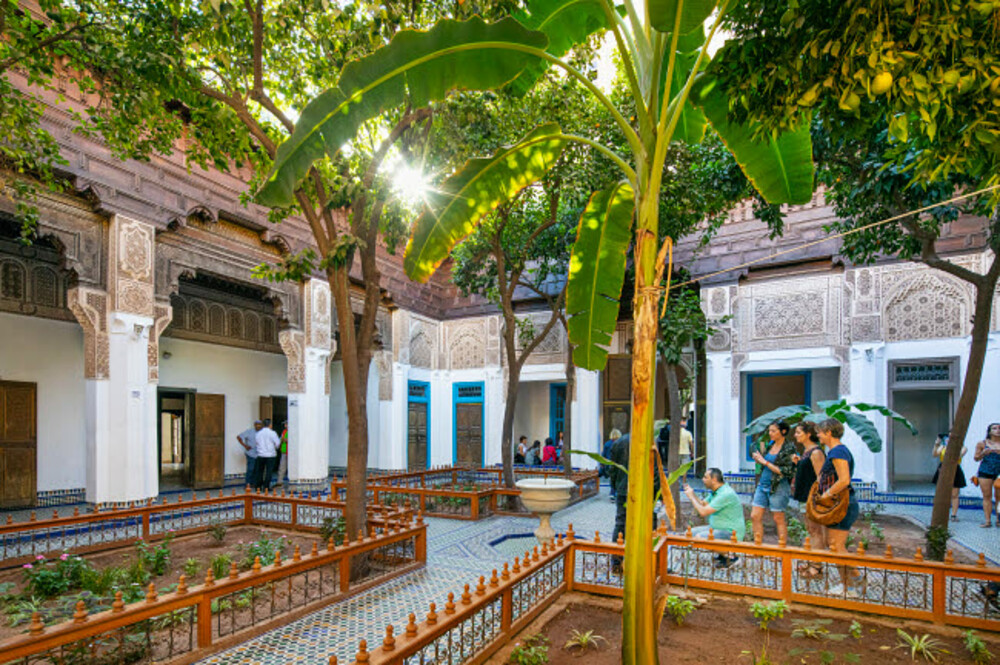The Bahia Palace, located in Marrakech, Morocco, epitomizes the splendor of Moroccan architectural mastery. Situated centrally, it serves as a living legacy of opulence and grandeur, drawing visitors into its historical narrative. Every corner whispers tales of the past, with its intricate embellishments captivating the imagination. From its sprawling layout to its meticulous design elements, the palace offers a glimpse into Morocco’s rich cultural heritage. Visitors are enchanted by its ornate details, transporting them to a bygone era of royalty and elegance. The Bahia Palace stands as a timeless monument, preserving the essence of Moroccan craftsmanship for generations to come.
Architecture and design elements


The Bahia Palace, erected in the late 19th century, epitomizes a stunning fusion of Islamic and Moroccan architectural designs. Originally commissioned by Grand Vizier Si Moussa, it aimed to stand as the pinnacle of opulence, symbolizing the prestige and authority of its owner. Comprising a vast expanse of interlinked courtyards, the palace exudes magnificence through its verdant gardens, elaborate fountains, and labyrinthine tiled pathways.
Notable for its unparalleled tilework and woodcarving, the palace mesmerizes visitors with its meticulous attention to detail. Every facet is embellished with intricate geometric patterns and floral motifs, showcasing the artisans’ dedication to their craft. From the elaborately carved wooden ceilings to the vibrant zellige tilework adorning the walls, the palace exudes an aura of timeless elegance and refinement.
Over time, the Bahia Palace has evolved into a symbol of Morocco’s rich cultural heritage, attracting visitors from around the globe who marvel at its architectural splendor and historical significance. It stands as a testament to the artistic ingenuity and craftsmanship of generations past, preserving a legacy of beauty and grandeur for generations to come.
Historical significance

Originally commissioned by Si Moussa, the Bahia Palace was later expanded by his successor, Bou Ahmed. Over the years, it served as the residence of various political figures and dignitaries, cementing its status as a symbol of power and prestige in Moroccan history.
Beyond its political significance, the palace also holds cultural importance as a showcase of traditional Moroccan craftsmanship and design. Its architecture reflects the cultural exchange between Morocco and the Islamic world, with influences ranging from Andalusian to Ottoman styles.
Exploring the interior
Visitors to the Bahia Palace are treated to a glimpse into the lavish lifestyle of Morocco’s elite. The interior features a series of sumptuous reception halls, adorned with intricate plasterwork, colorful stained glass windows, and elaborately carved wooden doors. The living quarters, once inhabited by the palace’s residents, offer a glimpse into the daily life of Morocco’s ruling class.
One of the highlights of the palace is its hammams, or traditional Moroccan bathhouses, which are adorned with marble floors and intricately carved stucco. These tranquil spaces served as places of relaxation and rejuvenation for the palace’s inhabitants, reflecting the importance of self-care in Moroccan culture.
Gardens and surrounding area

The Bahia Palace, an architectural gem nestled in Marrakech, boasts more than just its grandeur. Its allure extends to the meticulously landscaped gardens that envelop it. These gardens, a testament to Moroccan craftsmanship, are a symphony of colors and scents. Towering palm trees sway gently, providing shade and a sense of tranquility. Fragrant citrus trees perfume the air, while vibrant flowers add splashes of color to the verdant landscape.
The palace’s gardens are not merely ornamental but serve as a sanctuary from the city’s frenetic pace. Amidst the lush greenery, visitors can find respite, wandering through tranquil courtyards adorned with intricately designed fountains and shimmering reflecting pools. These elements evoke a sense of peace and serenity, inviting contemplation and relaxation.
Moreover, the Bahia Palace is not an isolated oasis but is surrounded by the vibrant energy of Marrakech’s medina. Exploring the nearby labyrinthine alleyways reveals a tapestry of sights, sounds, and smells. From bustling souks brimming with exotic goods to historic landmarks steeped in centuries of culture, the surrounding area promises an enriching experience for visitors seeking to immerse themselves in the essence of Morocco.
Preservation efforts
In recent years, efforts have been made to preserve and restore the Bahia Palace, ensuring that future generations can continue to marvel at its beauty. Restoration projects have focused on repairing damage caused by age and environmental factors, while also safeguarding the palace’s unique architectural features.
Despite these efforts, preserving heritage sites like the Bahia Palace remains a challenging task. The delicate nature of the palace’s architecture, combined with the pressures of urban development, present ongoing challenges for conservationists and historians alike.
Visitor information
For those wishing to explore the Bahia Palace, it is open to the public for a nominal fee. Guided tours are available for those seeking a deeper understanding of the palace’s history and significance, with knowledgeable guides providing insights into its architecture and design.
The palace is easily accessible from the city center, making it a popular destination for tourists and locals alike. However, visitors should be mindful of the palace’s opening hours and plan their visit accordingly to avoid disappointment.
Impact on tourism
The Bahia Palace plays a significant role in Marrakech’s tourism industry, attracting visitors from around the world eager to experience its beauty and history firsthand. Its status as a UNESCO World Heritage Site further enhances its appeal, drawing cultural enthusiasts and history buffs alike.
Beyond its economic impact, the palace also serves as a cultural hub, fostering exchange and dialogue between visitors and locals. Through guided tours and educational programs, visitors gain a deeper appreciation for Moroccan culture and heritage, enriching their travel experience in the process.
Cultural significance
Beyond its architectural splendor, the Bahia Palace holds immense cultural significance as a symbol of Morocco’s rich history and artistic heritage. It has served as a backdrop for royal receptions, diplomatic meetings, and cultural events, showcasing the country’s hospitality and tradition of gracious living.
Conclusion
In conclusion, the Bahia Palace stands as a testament to Morocco’s rich architectural heritage and cultural legacy. Its intricate design elements and storied history offer visitors a glimpse into the country’s illustrious past, while its lush gardens provide a tranquil retreat from the hustle and bustle of modern life. As efforts to preserve and protect this cultural treasure continue, the Bahia Palace will undoubtedly remain a cherished landmark for generations to come.
FAQs
- Is photography allowed inside the Bahia Palace?
- Yes, photography is permitted in most areas of the palace, except for certain designated areas.
- Are there any restrictions on attire for visitors?
- While there are no strict dress codes, visitors are encouraged to dress modestly out of respect for the palace’s cultural significance.
- Are guided tours available in multiple languages?
- Yes, guided tours are offered in several languages, including English, French, Spanish, and Arabic.
- Can visitors access all parts of the palace?
- While most areas of the palace are open to the public, some sections may be restricted for preservation purposes.
- Is there a gift shop on-site?
- Yes, there is a gift shop near the entrance where visitors can purchase souvenirs and mementos of their visit.



